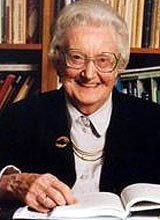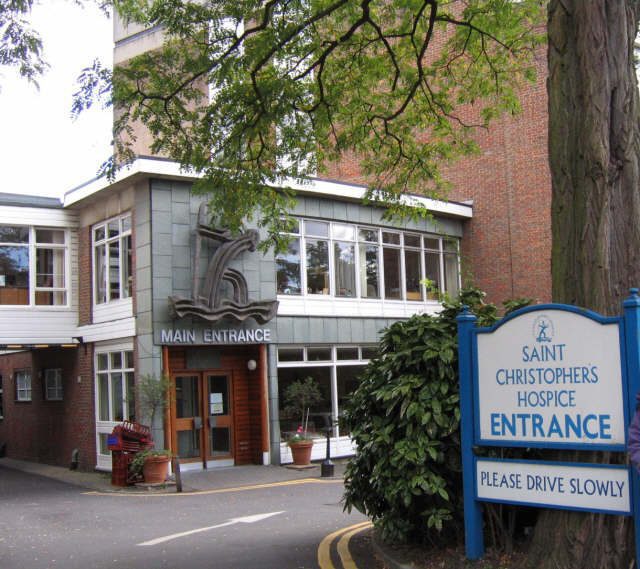Julie Silverman
Seattle, Washington, United States

Photography as originally appeared in The Telegraph, UK
“Many doctors nowadays, when the death of their patients becomes imminent, seem to believe that it is quite proper to leave the dying in the care of the nurses and the sorrowing relatives,” lamented Dr. Alfred Worcester in 1935, “This shifting of responsibility is un-pardonable.”1 Then as now, abandoning patients at their time of greatest need represents a tendency for many modern physicians to view terminal illness and death as both a personal and medical failure. As Dr. John McCue more recently noted, “Dying, which was once a natural and expected event, has become medicalized into an unwelcome part of medical care. . . . Death has become medicine’s enemy—a reminder of our limitations of medical diagnosis and management.”2
Medicine’s discomfort with death also confronted Dr. Elisabeth Kübler-Ross when, in 1965, she and four Chicago theological seminary students began their seminal work talking with terminally-ill patients. When it came to finding patients for their research project that studied death and dying, she described the resistance she encountered:
I set out to ask physicians of different services and wards for permission to interview a terminally ill patient of theirs. The reactions were varied, from stunned looks of disbelief to rather abrupt changes of topic of conversation; the end result being that I did not get one single chance even to get near such a patient … It suddenly seemed that there were no dying patients in this huge hospital.3
Like many others, Kübler-Ross found the subject of death taboo. Patients with terminal illnesses were rarely told of their prognosis. The discussion of dying was strictly prohibited.
It was this attitude towards death—or rather this avoidance of the subject of death—that prompted one of Kübler-Ross’ British contemporaries, Dame Cicely Saunders, to envision the hospice movement. Saunders maintained that “a society which shuns the dying must have an incomplete philosophy.”4 Her mission was to complete society’s philosophy.
Cicely Saunders was born in London in 1918 to a well-off family. As a young adult, she attended Oxford University, where she studied philosophy, politics and economics. However, when World War II began, pursuing a humanities degree “didn’t seem to be the right thing to be doing.”5 She left the university and entered the Nightingale Training School to become a Red Cross nurse. Unfortunately, due to back problems, Saunders’ nursing career was short lived. Wanting to stay in the medical field, she returned to Oxford to become an almoner, or medical social worker.
In 1947, Saunders began work at St. Thomas’ Hospital, which specialized in treating cancer patients. It was at St. Thomas’ that she met David Tasma, the man Saunders credits as the catalyst for her work with the terminally ill. Saunders recalls:
[I]n the first ward I took over, I met a Polish Jew from Warsaw, who got out before the Resistance. He was 40, and had inoperable cancer, and because he had no family, I knew he had run into trouble. And so I kept in touch with him, and when he collapsed and was admitted to another hospital, I followed him there and was virtually his only visitor for the two months that he was dying. We talked together about somewhere that would be more suitable for him than the very busy surgical ward where he was. We wanted a place not just for better symptom control, but for trying to find out, in a way, who he was.5
The conversations between Tasma and Saunders served as the basis of Saunders’ philosophy. When Tasma died, he left Saunders £500 so that “I will be a window in your Home.”6 This “home” that Tasma and Saunders envisioned was realized 20 years later in the form of St. Christopher’s Hospice.
Saunders continued her work as an almoner and began volunteering as a nurse at St. Joseph’s Hospice, one of the few early homes for the dying. At St. Joseph’s, Saunders was introduced to the idea of preventive pain management for patients with chronic pain. For the first time, Saunders saw morphine provided on a schedule rather than the “as needed” practice common in hospitals. At St. Joseph’s, Saunders’ philosophy of pain management shifted from pain response to pain prevention. She learned that “once pain has become severe it is a potent antagonist to the effect of any analgesic.”7 With this new understanding that “constant pain needs constant control,” Saunders insisted that “we should anticipate distress and pain by our treatment so that the patient does not continually do so himself.”7

Photography by Stephen Craven
Saunders’ interest in the pain of the terminally ill helped her decide to return to medicine. At age 33, Saunders returned to school, completing her medical studies in 1957, followed by a research fellowship in pharmacology. During her studies and her eight subsequent years working at St. Joseph’s as a clinician, Saunders never forgot about the “home” she and Tasma had imagined. Choosing the name St. Christopher, the patron saint of travelers, to represent the hospice’s mission to care for those in the final stages of their life’s journey, she established a charity in 1963 to raise funds and began a crusade to support her idea. Saunders wrote thousands of letters—to friends, colleagues, and potential benefactors—outlining her philosophy:
All the work at St. Christopher’s should stem from respect for the patient and very close attention to his distress. It means really looking at him, learning what this kind of pain is like, what these symptoms are like, and from this knowledge finding out how best to relieve them. We have to learn what it feels like to be so ill, to be leaving life and its activity, to know that your faculties are failing, that you are parting from loves and responsibilities. We have to learn how to feel “with” patients without feeling “like” them if we are to give the kind of listening and steady support that they need to find their own way through.8
Saunders hoped to create a model of care which could be replicated around the world, creating a place “where all kinds of people can join us to learn from our experience and learn from our patients.”8 Saunders realized her dream in 1967 with the opening of St. Christopher’s Hospice.
The concept of hospice quickly spread, and Saunders traveled extensively to promote her vision. During one of her transatlantic trips, she spoke at Yale University, where Florence Wald, then the Dean of Yale School of Nursing, was inspired by Saunders’ presentation:
The issues illustrated by the slides—those of communication, symptom management, making choices—were the same ones we were dealing with. When I saw that she had forged a way to handle some of the problems we were dealing with—not including the family and not permitting the patient to have a choice—that was very appealing to me. I got hooked at that point, and by 1965 I had decided to get into hospice care.9
After studying at St. Christopher’s and researching care of the terminally ill in the United States, Wald—along with an interdisciplinary team of doctors, nurses, and clergy—opened Connecticut Hospice, the first hospice in the United States, in 1974. With Congress adding hospice care as a Medicare benefit in 1982, hospice programs have continued to grow, with more than 3,400 hospice programs now serving over one million people in the United States.10
Saunders spent the 18 years following its inauguration serving as the medical director of St. Christopher’s Hospice. With each passing year, St. Christopher’s added home care services, established a strong education center, and advanced the research of pain management. Continuing to write and speak about hospice and palliative care, Saunders was honored with numerous awards and decorations, including the title of Dame Commander of the British Empire, the Templeton Prize, the Lambeth Doctorate of Medicine, and the Order of Merit from Queen Elizabeth II. At 85 years of age, after having revolutionized the way medical establishments approach death and treat the terminally ill, Dame Cicely Saunders died peacefully at St. Christopher’s Hospice.
Despite Dame Saunders’ work and the ongoing evolution of the hospice movement, much work still remains to improve care for the dying. Death is still commonly viewed as a medical failure by a significant portion of the medical community. By refusing to recognize the reality of their patients’ terminal illness, healthcare providers fail to adequately address the physical and emotional needs of their terminally-ill patients. The life and work of Dame Saunders attests to the reality that death and dying can be a dignified, comfortable and peaceful experience for patients and families. The many individuals that continue to contribute to the hospice movement ensure that Dame Saunders’ vision remains a reality and a hope for the terminally ill.
References
- Worcester A. The care of the aged, the dying, and the dead. Springfield, IL: Charles C. Thomas; 1935. P. 33
- McCue JD. The naturalness of dying. JAMA. 1995 Apr.;273(13):1039-1043.
- Kübler-Ross Elisabeth. On death and dying. New York: Simon & Shyster; 1997.
- Saunders C. And from sudden death … Frontier. 1961(a) Winter; No page numbers.
- Stolberg SG. A conversation with Dame Cicely Saunders; reflecting on a life of treating the dying. New York Times. 1999 May 11 [cited 2011 Apr 26]. Available from http://www.nytimes.com/1999/05/11/health/conversation-with-dame-cicely-saunders-reflecting-life-treating-dying.html
- Saunders C. Caring for cancer. J R Soc Med. 1998 August;91(8):439–441.
- Clark D. ‘Total pain,’ disciplinary power and the body in the work of Cicely Saunders, 1958-1967. Social Science & Medicine. 1999;49:727-736.
- Saunders C. Watch with me. Nurs Times. 1965; 61(48):1615-1617.
- Friedrich MJ. Hospice care in the US: a conversation with Florence S. Wald. JAMA. 1999; 281(18):1683-1685.
- Hospice Association of America. Hospice facts & statistics. Washington DC: HAA; 2010 Nov [cited 2011 Apr 26].
JULIE SILVERMAN, MD, graduated from the University of Chicago Pritzker School of Medicine in 2009. She is currently a second-year resident in Internal Medicine at the University of Washington.
Highlighted in Frontispiece Volume 3, Issue 2 – Spring 2011

Leave a Reply